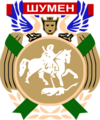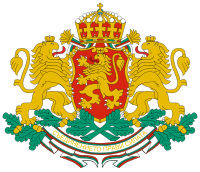Shumen
| Shumen Шумен |
|||
|---|---|---|---|
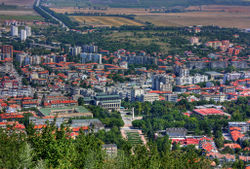 |
|||
|
|||
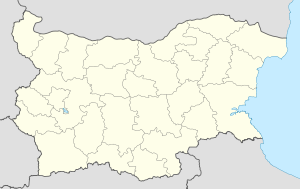 Shumen
|
|||
| Coordinates: | |||
| Country | |||
| Province (Oblast) |
Shumen | ||
| Government | |||
| - Mayor | Krasimir Kostov (BSP) | ||
| Elevation | 184 m (604 ft) | ||
| Population (12.06.2006) | |||
| - Total | 103,016 | ||
| Time zone | EET (UTC+2) | ||
| - Summer (DST) | EEST (UTC+3) | ||
| Postal Code | 9700 | ||
| Area code(s) | 054 | ||
| License plate | H | ||
Shumen (Bulgarian: Шумен) is a city in the northeastern part of Bulgaria, capital of Shumen Province. From 1950–1965 it was called Kolarovgrad, after Vasil Kolarov. Other English variants include Shoumen and Šumen. The city has a population of 103,016 by permanent address (2006).
Contents |
Geography
The city lies 80 km west of Varna and is built within a cluster of hills, northern outliers of the eastern Balkans, which curve round it on the west and north in the shape of a horse-shoe. A rugged ravine intersects the ground longitudinally within the horse-shoe ridge. From Shumen roads radiate northwards to the Danubian cities of Rousse and Silistra and to Dobruja, southwards to the passes of the Balkans, and eastwards to Varna and Balchik.
History
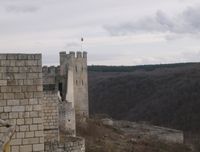
In 811 Shumen was burned by the emperor Nicephorus, and in 1087 it was besieged by Alexius I. During the golden age of Bulgarian culture under Simeon the Great (866-927), Shumen was a centre of cultural and religious activity, and may have born the name Simeonis. Until the 15th century, the city was located around the Shumen Fortress, a sophisticated complex of defensive installations, religious and civil buildings.
In 1388 the sultan Murad I forced it to surrender to the Ottoman Turks. After Władysław Warneńczyk's unsuccessful crusade in 1444, the city was destroyed by the Ottomans and moved to its present location. It was known by the Ottomans as Şumnu. In the 18th century it was enlarged and fortified. Three times, in 1774, 1810 and 1828, it was unsuccessfully attacked by Russian armies. The Turks consequently gave it the name of Gazi ("Victorious"). In 1854 it was the headquarters of Omar Pasha and the point at which the Turkish army concentrated (See Crimean War).
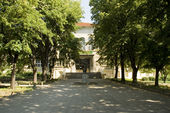
During the 19th century Shumen was an important centre of the Bulgarian National Revival, with the first celebration of Cyril and Methodius in the Bulgarian lands taking place on 11 May 1813 and the first theatre performance. A girls' religious school was established in 1828, a class school for girls and a chitalishte (community centre) followed in 1856. The first Bulgarian symphony orchestra was founded in the city in 1850. In the same year, influential Hungarian politician and revolutionary leader Lajos Kossuth spent a part of his exile in the then-Ottoman town of Shumen. The house he lived in is still preserved as a museum.
On the 22nd June 1878 Shumen finally capitulated to the Russians and became part of the newly-independent Principality of Bulgaria. In 1882 the Shumen Brewery, one of the first breweries in Bulgaria, was founded.
Education and science
Shumen has 11 elementary and 5 common schools, as well as 2 high schools. The University of Shumen and the Artillery and Air Defense Faculty to the Vasil Levski National Military University are the only higher education establishments in the city. The former operates a small astronomical observatory.
Sports
PFC Panayot Volov is the local football club, and uses a stadium of the same name as its home ground. Basketball, volleyball and handball are also represented, and most of the games are held at the Mladost sports centre.
Other sporting activities include martial arts (mostly karate) and horse racing. Shumen has its own rallying tournament, the Stari Stolitsi.
Landmarks
Shumen boasts the Monument to 1300 Years of Bulgaria, regarded as the only monument in the world to depict the history of a whole country from its creation to the present day.
The Shumen Fortress, partially restored after being destroyed by the Ottomans in the past, is an important historical monument of the medieval Bulgarian Empire. It is located not far from the city on the Shumen Plateau.
The Madara Horseman, a World Heritage Site, is an ancient (710 AD) monument usually attributed to the Bulgar culture, and lies some 20 km from Shumen.
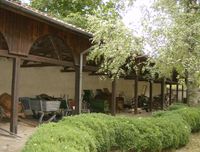
The religious buildings in the city include the Eastern Orthodox Holy Three Saints Cathedral and Holy Ascension Basilica, as well as the Tombul Mosque, the largest mosque in Bulgaria and one of the largest in the Balkans, serving Shumen and the region's Muslim minority.
Notable natives
- Pancho Vladigerov (1899-1978), composer, pedagogue and pianist.
- Dobri Voynikov (1833–1878), writer and enlightener
- Stoyan Danev (1858–1949), politician, twice Prime Minister of Bulgaria
- Ahmet Fikri Tüzer (1878-1942), Turkish politician and Prime Minister of Turkey
- Vasil Drumev (Clement of Tarnovo) (1841–1901), clergyman and politician, twice Prime Minister of Bulgaria
- Vasil Kolarov (1877–1950), politician, Communist leader
- Veneta Vicheva (b.1931), choir conductor
- Hacho Boyadzhiev (b. 1932), film director
- Todor Kolev (b.26.8 1939), actor
- Maxim Behar (b. 1955), Leading public relations expert, Chief Executive of M3 Communications Group, Inc., a Public Relations Company in Bulgaria, exclusive associate of Hill & Knowlton Group.
- Ivan Dochev (1906-2005), anti-communist politician
- Yusuf İsmail (1857-1898) was a Turkish professional wrestler
Gallery
|
The Shumen Fortress |
 The Shumen Fortress |
 The Shumen Fortress |
_-_Le_cinéma.jpg) Military Club (built 1901–1903) |
.jpg) Church of Shumen |
 Central Shumen |
Central Shumen |
 The Shumen Fortress |
|
The East Bulgarian horse breed, created in Shumen |
Tombul Mosque |
 Tombul Mosque |
 The Court House of Shumen |
 The center of Shumen |
Monument to 1300 Years of Bulgaria |
 The Shumen Fortress |
 The Shumen Fortress |
Twinned Towns
 Debrecen, Hungary
Debrecen, Hungary Zhengzhou, China
Zhengzhou, China Mâcon, France
Mâcon, France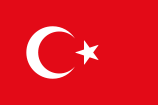 Adapazarı, Turkey
Adapazarı, Turkey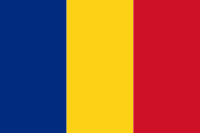 Tulcea, Romania
Tulcea, Romania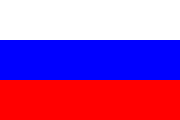 Podolsk, Russia
Podolsk, Russia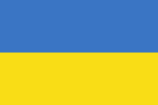 Kherson, Ukraine
Kherson, Ukraine
Honour
Shumen Peak on Livingston Island in the South Shetland Islands, Antarctica is named after Shumen.
References
 This article incorporates text from a publication now in the public domain: Chisholm, Hugh, ed (1911). Encyclopædia Britannica (Eleventh ed.). Cambridge University Press.
This article incorporates text from a publication now in the public domain: Chisholm, Hugh, ed (1911). Encyclopædia Britannica (Eleventh ed.). Cambridge University Press.
External links
- Official Shumen municipality site
- Portal of Shumen
- High definition video of the Shumen 1300 Years monument
- High definition video of the city of Shumen
|
||||||||||||||||||||||||||||
|
||||||||||||||||||||
